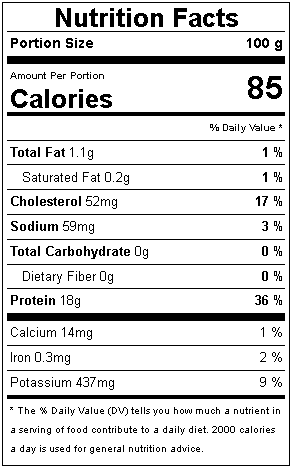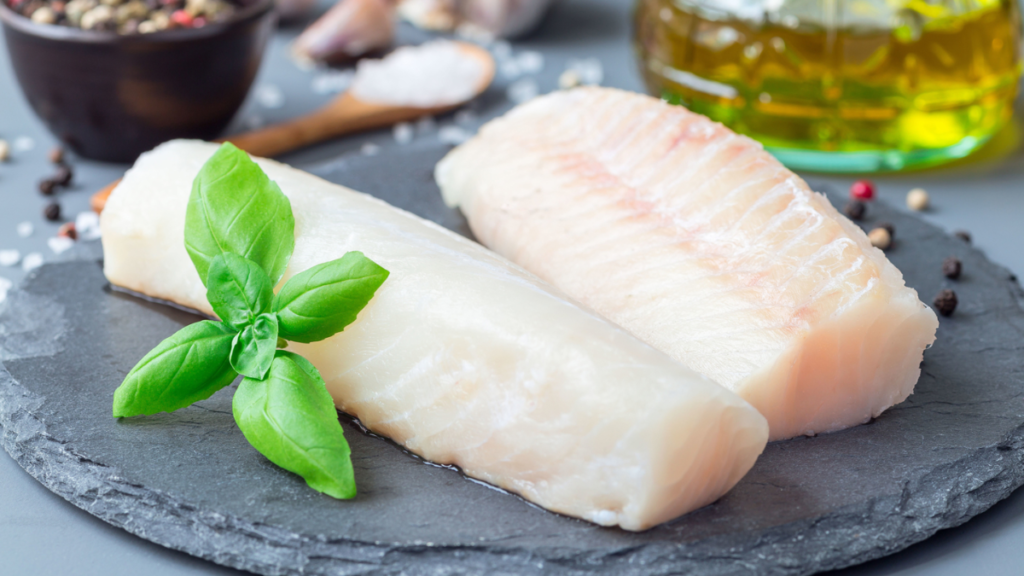Lingcod is one of the easiest fish to prepare, so there are many different recipes for this delicious, light fish. It can be served simply with lemon butter garlic sauce or alongside a side dish of your choice. Rinse the Lingcod well under cold water, cut it into serving pieces, and remove any bones. Place it on a foil-lined baking sheet, brush with olive oil, and season with salt and pepper. You can find many variations of lingcod recipes on Pinterest. For instance, you can find one by Gary Foth, who has a board full of lingcod recipes. This type of fish is delicate enough to let the flavors of other ingredients shine through without compromising its flaky texture.
To make the most delicious lingcod, you should select fresh lingcod fillets that are bluish-green when raw. You can use scallions instead of shallots. Adding fresh basil and sun-dried tomatoes to the sauce gives it a more Mediterranean flavor. Alternatively, if you don’t have lingcod in season, you can try sun-dried tomatoes. You can also make a healthy blender Hollandaise sauce in less than fifteen minutes.
Lingcod Nutrition Facts
What is Lingcod?
It isn’t cod, that is for sure! Lingcod is a lean saltwater fish with a delicate, flaky texture and a moderate flavor with a tinge of sweetness. It stretches from Alaska to California along the United States’ West Coast. It absorbs tastes well and can be prepared in various ways, making it ideal for pan-searing, grilling, and deep-frying. Lingcod isn’t commonly seen in stores, but if you don’t know any West Coast fishermen, you can substitute any firm white fish for this recipe. When purchasing fish, aim for solid, clean fillets free of spots and have no fishy odor. Take your time choosing your fish and, if necessary, ask questions. If you enjoy seafood, a good fishmonger is worth its weight in gold.
How to Make the Best Lingcod?
We wanted the mild sweet taste of the ling fish to show through, so we seasoned it with salt and pepper before pan-searing it in a small amount of light olive oil, just long enough to create a soft crust. The crunchy outside texture of the seared fish was preserved in the oven, while the internal texture was deliciously delicate and flaky.
Ingredients You’ll Need
- Lingcod Fillets
- Lemon: Zest and juice
- Mayonnaise: good quality
- Dijon Mustard
- Garlic
- Swiss Chard
Ingredient Swaps
- White Fish Fillets: If you don’t have access to lingcod, a good substitution would be halibut fillets, cod, or black cod.
- Swiss Chard: Any delicate, fast-cooking greens can be substituted for Swiss chard. Spinach, mustard greens, or collard greens would work here. I do not suggest kale, as it’s a tricky textured green and will not sautee and soften quickly.
- Olive Oil: Add a rich buttery flavor by substituting two tablespoons of butter for the olive oil when sauteeing the lingcod fillet.
Step By Step Instructions
Here are the instructions for making:
- Step 1: Sautee and sear the lingcod. Heat a heavy pan over medium-high heat. Once the pan is hot, add olive oil. Once the olive oil is hot and shimmering, add the lingcod fillets. Cook until one side has turned golden brown, which will take just a couple of minutes. Using a spatula, turn the fillets and repeat on the other side.
- Step 2: Place the seared lingcod fillets on an oiled or parchment paper-covered baking sheet and place them in a 400-degree oven. Roast for about ten minutes or until fish flakes easily when pressing on it with the back of a fork.
- Step 3: Make the Aioli. This is somewhat of a cheater’s aioli recipe. Rather than making aioli from scratch using egg yolks, we’re using already prepared mayonnaise and adding additional flavors of lemon juice, lemon zest, Dijon mustard, and garlic. EASY. In a small bowl, add ingredients and blend with a fork.
- Step 4: Prepare the chard. Again easy! Heat some oil in the same pan that you seared the lingcod. Remove the large stems and veins and cut the chard into strips. When the oil is hot, add garlic and red pepper flakes and cook until fragrant. Add chard and cook just long enough that the chard starts to wilt. Remove from heat and keep warm.
What kind of Pan Should I Use?
Use your favorite cast iron skillet or stainless steel to achieve that caramelized sear on your fillets. Avoid using non-stick pans for pan-searing your fish, but if that’s all you have, it’ll suffice; you won’t achieve the crispy color you’re hoping for. But be cautious! If you don’t want to use a non-stick pan, make sure it’s well-seasoned. It’s preferable to use a non-stick pan rather than something that causes your fish to adhere to the pan.
Melt the butter or oil in a medium saucepan over medium heat. The butter should be heated to around 300-325 degrees Fahrenheit for this dish. Butter has a smoke point of only 350 degrees Fahrenheit, which means it will burn at temperatures higher than that, so don’t overheat it! Place your fillets in a pan of hot, melted butter and cook for 4 minutes per side, or until the fish flakes easily with a fork.
What are the Health Benefits of Lingcod?
Line-caught lingcod, also known as buffalo cod or Ophiodon elongatus, is fished in the glacial seas off the coast of Southwestern Alaska. After that, the lingcod is bled and frozen at sea, and this provides the highest level of freshness and quality for your enjoyment. Only the West Coast of North America is home to the lingcod and the Gulf of Alaska, from the Mexico-California region. They weigh 25 to 35 pounds on average but can weigh up to 65 pounds, and their skin is grey-brown to green-bluish.
But it’s the fish’s incredible adaptability in the kitchen, and wonderful flavor that makes it such a sought-after delicacy. The white meat is soft, velvety, and abundant in healthful Omega 3 fatty acids, with a rich but not overpowering flavor. This North American pearl can be grilled, baked, or fried, just like halibut. It’s also a fantastic option for smoking due to its high oil content. With the ever-evolving wild Alaskan lingcod, you’ll never be bored!
- Wild Alaskan lingcod is an excellent source of protein that help promote healthy bones, cartilage, skin, and blood.
- Lingcod is an excellent source of omega-three fatty acids. These are known to help promote heart health and lower cholesterol.
- Selenium and vitamin B12 found in lingcod may help reduce the risk of colon cancer.
- A Canadian study published in the April 2004 issue of ‘Cancer Epidemiology Biomarkers & Prevention suggests that persons whose diet includes more weekly servings of fresh fatty fish have a much lower risk of these three types of cancer. Leukemia, non-Hodgkin lymphoma, and myeloma.
- Lingcod is also an excellent source of niacin and another B vitamin often used to lower high cholesterol levels, leading to heart disease.
Conclusion
Another great way to cook lingcod is in a pan. To achieve this, start by adding the fillet to the skillet skin-side down. Once the skin has begun to crisp, flip it over. When it is ready, add the sliced garlic. Cook for 30 seconds, or until fragrant, and serve immediately. You can serve ling cod with lemon wedges or hand-made pappardelle. Then, serve it with lemon wedges and parsley for a delicious and nutritious meal.
Mix 5 tablespoons of fresh lemon juice, 2 tbsp of extra virgin olive oil, and melted butter to make a perfect lemon sauce. Then, add the fish to the sauce, coating each piece. Then, please place it in the hot skillet for about two minutes. Flip it over and repeat the process. The fish should reach an internal temperature of 145 degrees. This recipe is quick and easy to make and can be used again.



